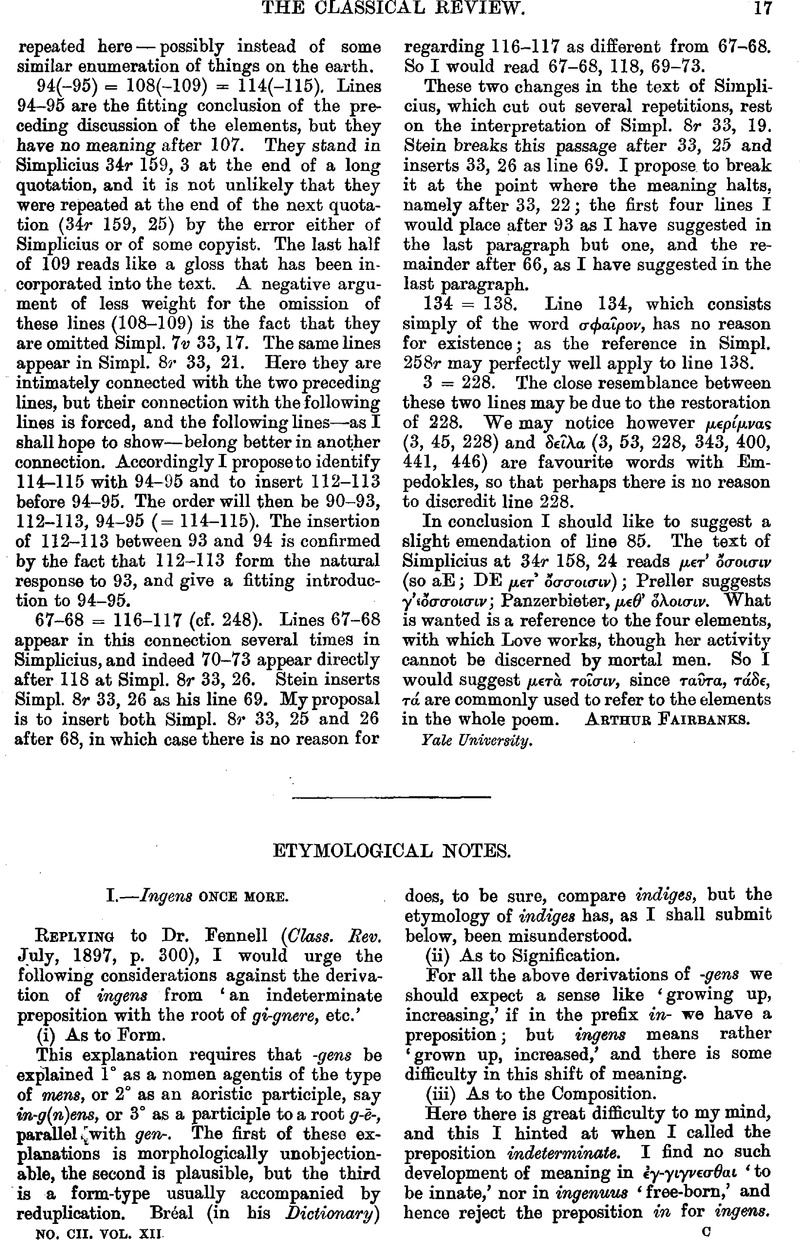No CrossRef data available.
Article contents
Etymological Notes
Published online by Cambridge University Press: 27 October 2009
Abstract

- Type
- Original Contributions
- Information
- Copyright
- Copyright © The Classical Association 1898
References
page 18 note 1 The derivation of anhēlare from a preposition with hālare is, I am convinced, erroneous. The root of Lat. anima, Grk. ἄνεμος, Sk. ánila-s, is an∂-. As other ‘dissyllabic’ roots frequently show in Sanskrit ![]() (‘from
(‘from ![]() ’?), I would connect anhēlus ‘gasping’ directly with Sk. ánila-s ‘wind’ (cf. ániti ‘he gasps’). The ē of anhēlus shows the same riddlesome variation in colour (ē and not ā) shown by ἄνεμος while its length as well as the h may well be of secondary origin—by association with hālare—or we may here have the result of an Aryan
’?), I would connect anhēlus ‘gasping’ directly with Sk. ánila-s ‘wind’ (cf. ániti ‘he gasps’). The ē of anhēlus shows the same riddlesome variation in colour (ē and not ā) shown by ἄνεμος while its length as well as the h may well be of secondary origin—by association with hālare—or we may here have the result of an Aryan ![]() (?).
(?).
I am also not in accord with the derivation of hālare from a noun-stem *an-s-lo-, even though this is a very neat phonetic feat. To me hālare looks very much like an extension of ![]() , the sighing interjection.
, the sighing interjection.
page 18 note 2 Accepted by Brugmann with a qualifying ‘wol’ (Gr. ii. § 575), and cited without expression of opinion by G. Meyer (Gk. Gram.3 § 448); disputed by the author, Am. Jr. Phil. xv. 427, footnote 1, on grounds no longer cogent if ingent- is a cognate of Sk.mahánt-.


